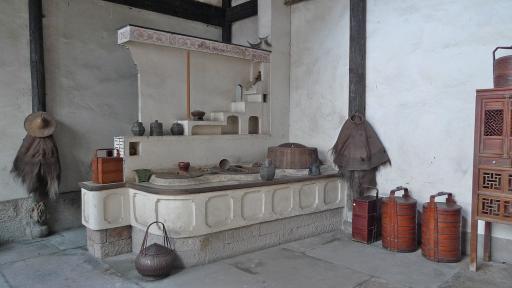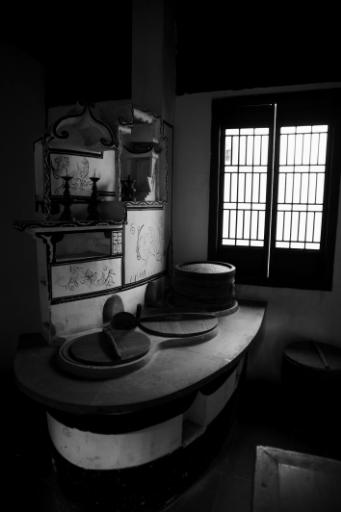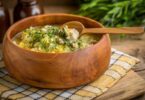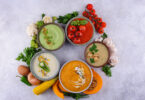Chinese Kitchen is one of the world’s most diverse and rich culinary traditions. It has evolved over thousands of years, influenced by different regions, dynasties, and cultures. In this blog post, we will explore the history, present, and most famous dishes and tools of the Chinese Kitchen.
The History of the Chinese Kitchen

The history of the Chinese Kitchen is closely tied to the history of China itself, with different dynasties and regions developing their own unique cooking styles. The earliest known Chinese cookbook dates back to the Han Dynasty (206 BC-220 AD), and it is believed that the Chinese Kitchen began to take shape during the Shang Dynasty (16th-11th century BC).
Over the centuries, Chinese Kitchen has also been influenced by other cuisines from the Middle East, Central Asia, Europe, and Japan, thanks to the Silk Road trade routes and the arrival of foreign merchants and missionaries. Some ingredients and cooking techniques introduced to China include potatoes, tomatoes, chili peppers, cheese, milk, butter, bread, pasta, coffee, tea, and curry.

Some of the most influential periods in the history of Chinese Kitchen include:
– The Tang Dynasty (618-907 AD) was considered the golden age of Chinese culture and cuisine. The imperial court of the Tang Dynasty was known for its lavish and diverse banquets featuring exotic ingredients and dishes from various regions and countries. The capital city of Chang’an (modern-day Xi’an) was a cosmopolitan center of gastronomy, where restaurants and street vendors offered a variety of cuisines and specialities.
– The Song Dynasty (960-1279 AD) saw the development of regional cuisines, such as Sichuan, Cantonese, Fujian, and Jiangsu. The Song Dynasty also witnessed the rise of literati cuisine, a refined and elegant style of cooking practiced by scholars and artists who valued aesthetics, poetry, and harmony in their dishes. The Song Dynasty also popularized chopsticks, porcelain, and tea as part of the dining culture.
– The Ming Dynasty (1368-1644 AD) was known for its luxurious and elaborate dishes, especially at the imperial court. The Ming Dynasty chefs were skilled in carving, sculpting, and decorating food and creating complex sauces and seasonings. The Ming Dynasty also promoted the use of fresh and seasonal ingredients and vegetarian dishes influenced by Buddhism.
– The Qing Dynasty (1644-1912 AD), the last imperial dynasty of China, was also the most diverse and multicultural. The Qing Dynasty cuisine was influenced by the Manchu, Mongol, Tibetan, and Muslim cultures and the cooking of the regions conquered or annexed by the Qing Empire, such as Taiwan, Xinjiang, and Tibet. The Qing Dynasty cuisine was also characterized by its simplicity, elegance, balance, and emphasis on soups, stews, and hot pots.
The Present of the Chinese Kitchen

Today, Chinese Kitchen is one of the world’s most popular and widely spread cuisines, with restaurants and takeout shops offering various dishes and styles in almost every country. Chinese Kitchen is also constantly evolving and adapting to new trends, tastes, and ingredients, incorporating influences from other cuisines, such as Thai, Vietnamese, Korean, Indian, and American.

Some of the current trends and features of the Chinese Kitchen include:
– The use of modern technology and equipment, such as rice cookers, electric woks, pressure cookers, air fryers, and sous vide machines, to make cooking faster, easier, and more consistent.
– Social media and online platforms, such as blogs, YouTube, TikTok, and Instagram, are used to share recipes, tips, and videos and learn from other cooks and chefs, both amateur and professional.
– The use of organic, local, and sustainable ingredients and alternative protein sources, such as tofu, tempeh, seitan, and plant-based meats, to cater to the growing demand for healthy, ethical, and environmentally friendly food.
– The use of fusion and creative dishes, such as General Tso’s chicken, orange chicken, chop suey, egg rolls, fortune cookies, and bubble tea, which are not authentic Chinese dishes but rather adaptations or inventions that cater to the local palate and preferences of different countries and regions.
The Most Famous Dishes and Tools of the Chinese Kitchen
Chinese Kitchen is known for its diversity and variety, with hundreds of dishes and styles. However, some dishes are more famous and representative than others and have become icons of Chinese Kitchen worldwide. Here are some of the most famous dishes and tools of the Chinese Kitchen:

– Dumplings: Dumplings are one of the oldest and most beloved Chinese dishes, dating back to the Han Dynasty. Dumplings are made of thin dough wrappers, filled with various ingredients, such as meat, seafood, vegetables, or cheese, and then boiled, steamed, or fried. Dumplings come in different shapes, sizes, and names, such as jiaozi, wonton, baozi, xiaolongbao, and shumai.
– Stir-fry: Stir-fry is one of the most common and versatile Chinese cooking methods, which involves quickly frying ingredients in a small amount of oil over high heat while stirring and tossing them constantly. Stir-fry can be done with almost any combination of ingredients, such as meat, seafood, vegetables, noodles, or rice, and seasoned with various sauces, such as soy sauce, oyster sauce, hoisin sauce, or chili sauce. Stir-fry is usually done in a wok, a broad and shallow domed pot that gets very hot and distributes heat evenly.
– Hot pot: Hot pot is a communal and interactive Chinese dish, which involves cooking raw ingredients in a simmering broth pot and then dipping them in various sauces. Hot pots can be customized with different types of broth, such as spicy, sour, or herbal, and different ingredients, such as meat, seafood, vegetables, tofu, or noodles. A hot pot is usually served with a special tool called a hot pot cooker, an electric or gas-powered device that keeps the broth hot and allows diners to adjust the temperature.
– Peking duck: Peking duck is one of the most famous and prestigious Chinese dishes, originating from the imperial court of the Ming Dynasty. Peking duck is a whole duck roasted until the skin is crispy and the meat is tender and juicy. Peking duck is usually sliced and served with thin pancakes, scallions, cucumbers, and a sweet bean sauce. Peking duck is traditionally prepared with a special tool called a duck oven, a cylindrical oven that uses wood or charcoal to create high heat and smoke.
– Dim sum: Dim sum is a Cantonese style of cuisine consisting of small bite-sized dishes served in steamer baskets or on small plates. Dim sum dishes include various types of dumplings, buns, rolls, cakes, pastries, desserts, and tea. Dim sum is usually eaten as a brunch or snack and is often served with a special tool called a dim sum cart, a wheeled trolley carrying the dishes around the restaurant and allowing diners to choose what they want.
Conclusion
The Chinese Kitchen is a fascinating and delicious world of history, culture, and flavor. Whether you want to learn more about the origins and evolution of Chinese cuisine or try making some of the most famous and popular dishes and tools, we hope this blog post has inspired you and given you some helpful information.







